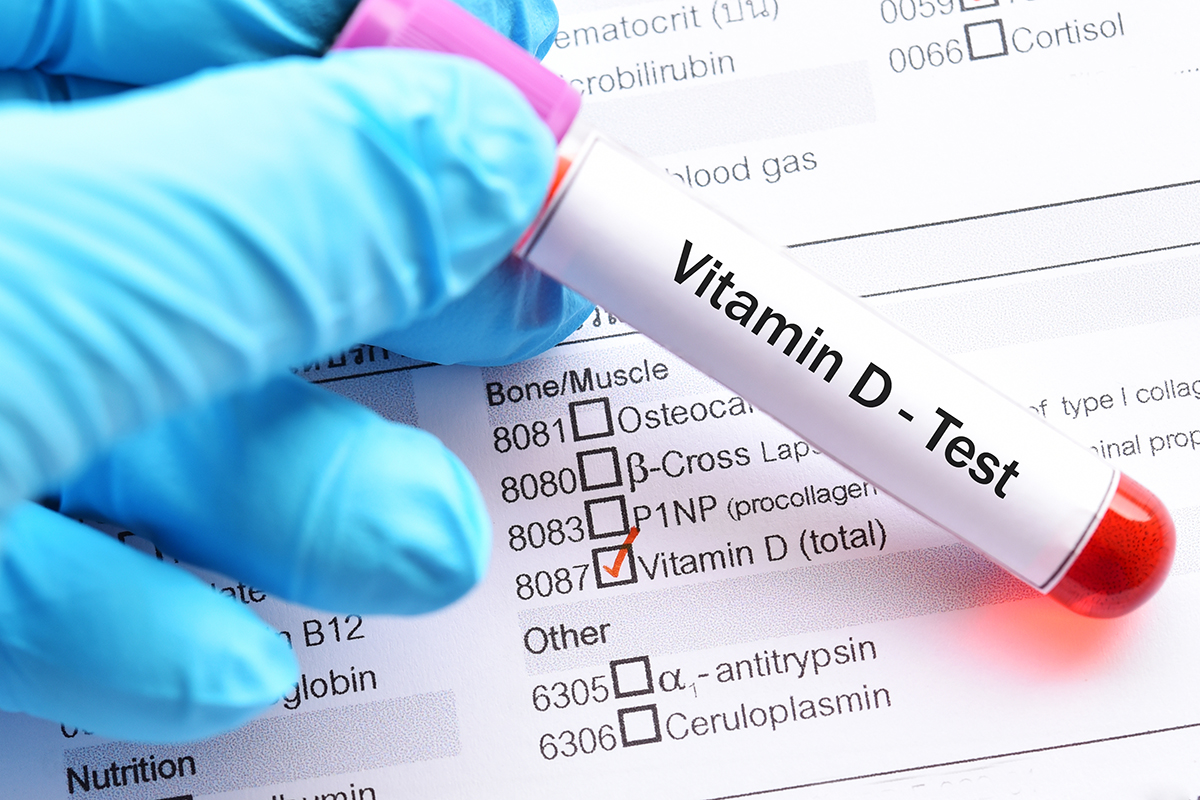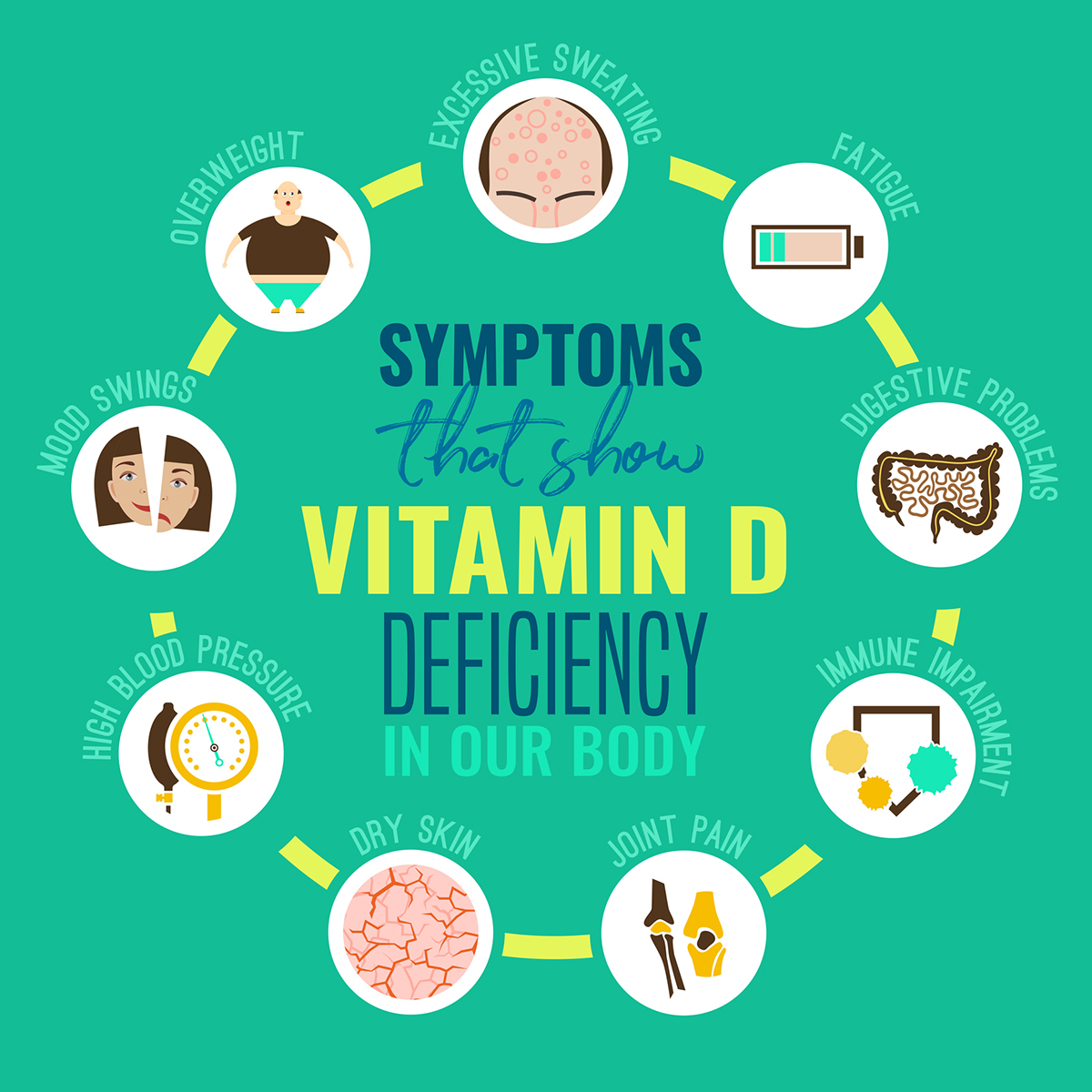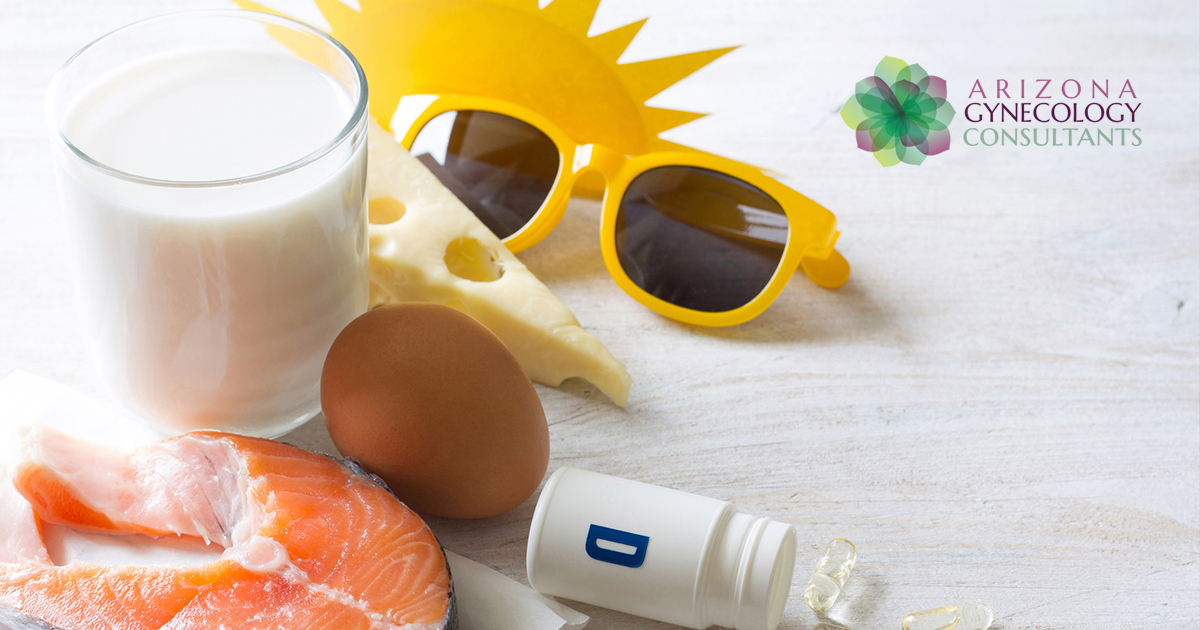If you’re a woman looking to maintain your health, your body needs a consistent intake of a variety of vitamins and minerals. Vitamin D is a crucial vitamin that the body needs to strengthen your bones, keep your blood vessels and heart healthy, and provide overall support for your immune system. Fortunately, a good amount of vitamin D can be obtained by being outside in the sun.
However, sometimes, that isn’t enough. If your body does not get the amount of vitamin D it needs, you can experience negative health effects. Learn more about the signs of a vitamin D deficiency.
Vitamin D Facts
Vitamin D is a vitamin that indirectly promotes bone health by helping the body and bone cells absorb phosphorus and calcium. It also assists with the functions of your immune, digestive, circulatory, and nervous systems. Vitamin D is a fat-soluble vitamin, which means that it is stored in the liver and fatty tissues in the body and is easier to absorb when taken with fats in the diet.
Some research implies that adequate amounts of vitamin D or vitamin D supplementation can prevent some disorders, such as diabetes, cancer, heart disease, and even depression. More research still must be done to fully understand the relationship between these disorders and vitamin D.
What Happens if Your Vitamin D Is Low?
Blood tests can reveal low vitamin D, which is typically less than 20 nanograms per mL of blood. A vitamin D deficiency is more serious and means that you do not have enough in your system for your body to maintain its regular function. As a result, health issues can arise, such as weak bones and muscles. Levels of less than 12 nanograms per mL of blood can indicate a deficiency. However, it is important to note that doctors do not routinely check vitamin D levels, and you may have low or even deficient levels of vitamin D without even knowing it for some time.
When there is not enough vitamin D in your body, your cells will struggle to effectively absorb other vitamins and much-needed minerals. With this comes a greater chance of experiencing pain in the bones, fractures of the bone, muscle pain, and weakness. For older adults, a deficiency can also result in frequent falls, which can be dangerous for those at risk for fractures.

Vitamin D deficiencies may also play a role in some conditions, such as fibromyalgia, chronic fatigue syndrome, and even multiple sclerosis.
Vitamin D Deficiency Symptoms
As mentioned, it is common to be unaware that you have low vitamin D or even that you are vitamin D deficient. However, some people may notice symptoms.

Here are a few of the most common vitamin D deficiency symptoms:
- Pain in the bones
- Sensitivity to pain
- Pain in the muscles
- Tingling in the hands and feet
- Muscle weakness in the upper arms or thighs
- Fatigue
- Hair loss
- Difficulty controlling blood sugar
- Memory issues
- Shuffling when walking due to weak hip and leg muscles
- Muscle spasms
- In extreme cases, bowed legs
It’s important to note that if you are experiencing one or a few of these symptoms, it may not necessarily mean that you have a vitamin D deficiency. If you have several, talk with your doctor to help you determine whether or not your symptoms mean that you are dealing with a vitamin D deficiency.
How Is Vitamin D Deficiency Diagnosed?
It’s difficult to determine a vitamin D deficiency from symptoms alone, making this deficiency particularly hard to diagnose. Doctors do not always order tests to check for this kind of deficiency. However, if a patient describes particular symptoms that they are experiencing, such as pain in the bones and muscles, then the doctor may order a test to check for a vitamin D deficiency.
Additionally, the doctor may ask about medical issues experienced in your family, like rickets, osteoporosis, and bone fractures. After blood testing and treatment, subsequent blood tests can help monitor vitamin D levels.
What Causes Vitamin D Deficiency?
There are several factors that can contribute to someone experiencing a vitamin D deficiency.
Some common reasons are:
- Limited exposure to sunlight
- Dark skin pigmentation
- Malnourishment
- Liver or kidney failure
- Some medications, including some laxatives, steroids, cholesterol drugs, anti-seizure drugs, and even a particular weight-loss drug (Orlistat)
- Particular types of cancer, including breast, colorectal, and multiple myeloma
- Family history of vitamin D deficiency or childhood rickets
In addition, other health issues and procedures can also contribute to a vitamin D deficiency, such as irritable bowel syndrome (IBS), celiac disease, cystic fibrosis, pancreatic issues, bariatric surgery, and removal of parts of the small intestine.
Who Is Most at Risk for Vitamin D Deficiency?
As mentioned, certain health conditions can contribute to vitamin D deficiency, but there are also hereditary and environmental factors that can cause this deficiency as well. One factor that contributes to vitamin D deficiency is age. Over time, the skin’s ability to produce this vitamin decreases. Interestingly enough, infants are also at a greater risk of being deficient, especially breastfed babies.
The color of your skin can be another factor. If your skin is darker, it is harder for the skin to create vitamin D from the sun. Even your mobility can play a part in this vitamin deficiency. The less able you are to get around, the more likely you are to develop this kind of deficiency. If you aren’t able to spend much time outside, or perhaps no time at all, your chances of developing a deficiency increase.
What Is the First Stage of Vitamin D Deficiency?
In the beginning stage of a vitamin D deficiency, there is a slight elevation in the parathyroid hormone. This is the hormone that the parathyroid glands excrete as a means of maintaining healthy levels of calcium. These glands also help control levels of phosphorus and vitamin D.
As the level of vitamin D falls, the parathyroid glands react to keep a good balance of vitamin D. Unfortunately, the body only makes vitamin D when bare skin is exposed to the sun. Things like window glass, smog, sunscreen, and even darker skin or old age can hamper production so much that parathyroid hormone cannot keep up. These individuals will need to eat dietary vitamin D or supplement their vitamin D intake.

What Blocks Vitamin D Absorption?
In addition to diminished production of vitamin D, there are several health issues that can block vitamin D absorption. Conditions such as Crohn’s disease, celiac disease, and cystic fibrosis can make it difficult for the intestines to absorb vitamin D. Kidney and liver diseases can also inhibit absorption as the level of enzymes needed to break down vitamin D is diminished.
Obesity can be another reason that your body doesn’t properly absorb vitamin D. Since vitamin D is fat-soluble, fat cells can retain vitamin D rather than expelling it for use. Even if you decide to undergo bariatric surgery to make your stomach smaller or if you have surgery to bypass a part of your intestines, it may be difficult for your body to receive a proper intake of vitamins and minerals, including vitamin D. Thus, vitamin D deficiency can be a vicious cycle for overweight and obese individuals.
How Is Vitamin D Deficiency Treated?
Making a change in your diet to eat more foods that are high in vitamin D can certainly help, but it is typically not enough to alleviate a deficiency. Your doctor will probably prescribe supplements to take until you achieve adequate vitamin D levels. Dosage amounts will depend on your age, weight, and how severe your deficiency is. Some prescriptions may be taken daily, while some are a weekly dose.
In addition to taking supplements, it is equally important to make sure you get enough calcium in your diet. With adequate levels of calcium and vitamin D in your body, you are lowering your risk of bone fracture, weakness, and developing osteoporosis.
While taking supplements is the best way to address a deficiency, it is still a good idea to consume food that will help you increase your dietary vitamin D intake.

Look for:
- Certain types of fatty fish, such as tuna and salmon
- Egg yolks
- Fortified milk and dairy products
- Certain types of fortified breakfast cereals
- Orange juice
- Mushrooms
You may also be told to spend more time outdoors in order to be exposed to sunlight. This can help your skin create natural vitamin D.
How Can I Raise My Vitamin D Level Quickly?
There are many ways to raise your vitamin D levels quickly. Below are just a few ways to achieve higher levels of this vitamin.
Exposure to the Sun
First, spend plenty of time outside, allowing your bare skin to be exposed to the sun. Vitamin D is actually nicknamed “the sunshine vitamin,” as the sun is the only way your body can naturally produce this vitamin. Of course, this must be done in moderation as you do not want to develop sunburn. With too much exposure, there is also a risk of skin cancer.
Eat Fatty Fish
Another way to easily raise your vitamin D level is to eat fatty fish and other seafood. A few to try include tuna, salmon, mackerel, oysters, sardines, shrimp, and anchovies. These types of fish are among the best sources of vitamin D found in food.

Eat Mushrooms
Mushrooms also contain vitamin D and can be a great way for vegetarians or vegans to consume this essential vitamin. Much like humans can make vitamin D with exposure to the sun, mushrooms can also create vitamin D through the same process. Because of this, wild mushrooms usually contain higher levels of the vitamin than those grown commercially. However, it is possible to find store-bought mushrooms that have been grown under ultraviolet light.
Add Egg Yolks to Your Diet
You may worry about raising your cholesterol by eating too many egg yolks. However, adding egg yolks to your diet is a good way to raise your vitamin D levels. Keep in mind that free-range chickens produce eggs with higher amounts of vitamin D, as they have more time in the sun.
Eat Fortified Foods
Even though the above options to raise your vitamin D levels include food, you may have noticed that there are not many food sources with high amounts of this vitamin. That’s why you’ll find so many vitamin D-fortified foods. This means that the food has added amounts of vitamin D as a nutritional supplement.
Some fortified foods to consider adding to your diet are cow’s milk (or soy, almond, or hemp milk if you prefer), cereal, some types of yogurt, orange juice, and tofu. You can always check the ingredients list to make sure it is a fortified food.

UV Lamps
If you would rather not be outside or are unable to spend a lot of time outdoors to start producing vitamin D from sunlight, a UV lamp may be a good alternative. These lamps release UV-B radiation, which mimics the sun’s rays and enables your body to start producing more vitamin D. Like too much sun exposure, there is a risk of sunburn from too much exposure to a UV lamp. Also, they can be expensive to purchase.
For further assistance in increasing your vitamin D levels quickly, talk with your doctor.
How Much Vitamin D Do You Need?
The main factor that determines how much vitamin D you need in your diet is your age. With each age range, the amount increases. For senior citizens and women who are pregnant or are nursing, it is suggested that you speak with your doctor about how much vitamin D is healthy for you. For a general guideline, however, the US Food and Nutrition Board recommends about 15 mcg of vitamin D (600 IU) per day.
Arizona Gynecology Consultants: Test for Vitamin D Deficiency
If you have experienced symptoms of a vitamin D deficiency, it is important to be tested to confirm that you have a deficiency. This will help you and your doctor form a more effective treatment plan. Changing your diet and simply spending more time outside in the sun, for example, may not be enough to increase your vitamin D level.

Arizona Gynecology Consultants offers testing for vitamin D deficiency and other health issues. If you are concerned that your symptoms are related to a vitamin D deficiency, contact Arizona Gynecology Consultants to undergo testing and maintain your healthy lifestyle.
Sources:
- Yale Medicine. (2023). Vitamin D Deficiency. Yale Medicine.
https://www.yalemedicine.org/conditions/vitamin-d-deficiency - ?Stages of Vitamin D Deficiency – LabCE.com, Laboratory Continuing Education. (n.d.). Www.labce.com. Retrieved June 19, 2024, from https://www.labce.com/spg477994_stages_of_vitamin_d_deficiency.aspx#:~:text=1.
- ?Nair, R., & Maseeh, A. (2012). Vitamin D: The “sunshine” vitamin. Journal of Pharmacology & Pharmacotherapeutics, 3(2), 118–126. https://doi.org/10.4103/0976-500X.95506
- ?How to Get Vitamin D: 7 Effective Ways. (2019, March 18). Healthline. https://www.healthline.com/nutrition/how-to-increase-vitamin-d#5.-Eat-fortified-foods
- ?National Institutes of Health. (2017). Vitamin D. Nih.gov. https://ods.od.nih.gov/factsheets/VitaminD-Consumer/
- ?Cleveland Clinic. (2022). Vitamin D Deficiency: Causes, Symptoms & Treatment. Cleveland Clinic. https://my.clevelandclinic.org/health/diseases/15050-vitamin-d-vitamin-d-deficiency
- ?Freeland, M. N. (2019, April 24). Is Vitamin D Deficiency Linked to Disease? GoodRx; GoodRx. https://www.goodrx.com/conditions/vitamin-d-deficiency/vitamin-d-deficiency-diseases

Nurse Practitioner
Julia is excited to join the team at Arizona Gynecology Consultants. After receiving a Bachelor’s of Science in Nursing from Arizona State University, she worked several years as a nurse in step down trauma and cardiac units at Scottsdale Osborn Hospital. Julia also served as a traveling nurse, gaining invaluable experience at Highland Hospital in Oakland, California and Piedmont Hospital in Atlanta, Georgia. Julia went on to earn a Doctorate in Nursing Practice from the University of Arizona where she focused on family practice with a specialty in women’s health.

